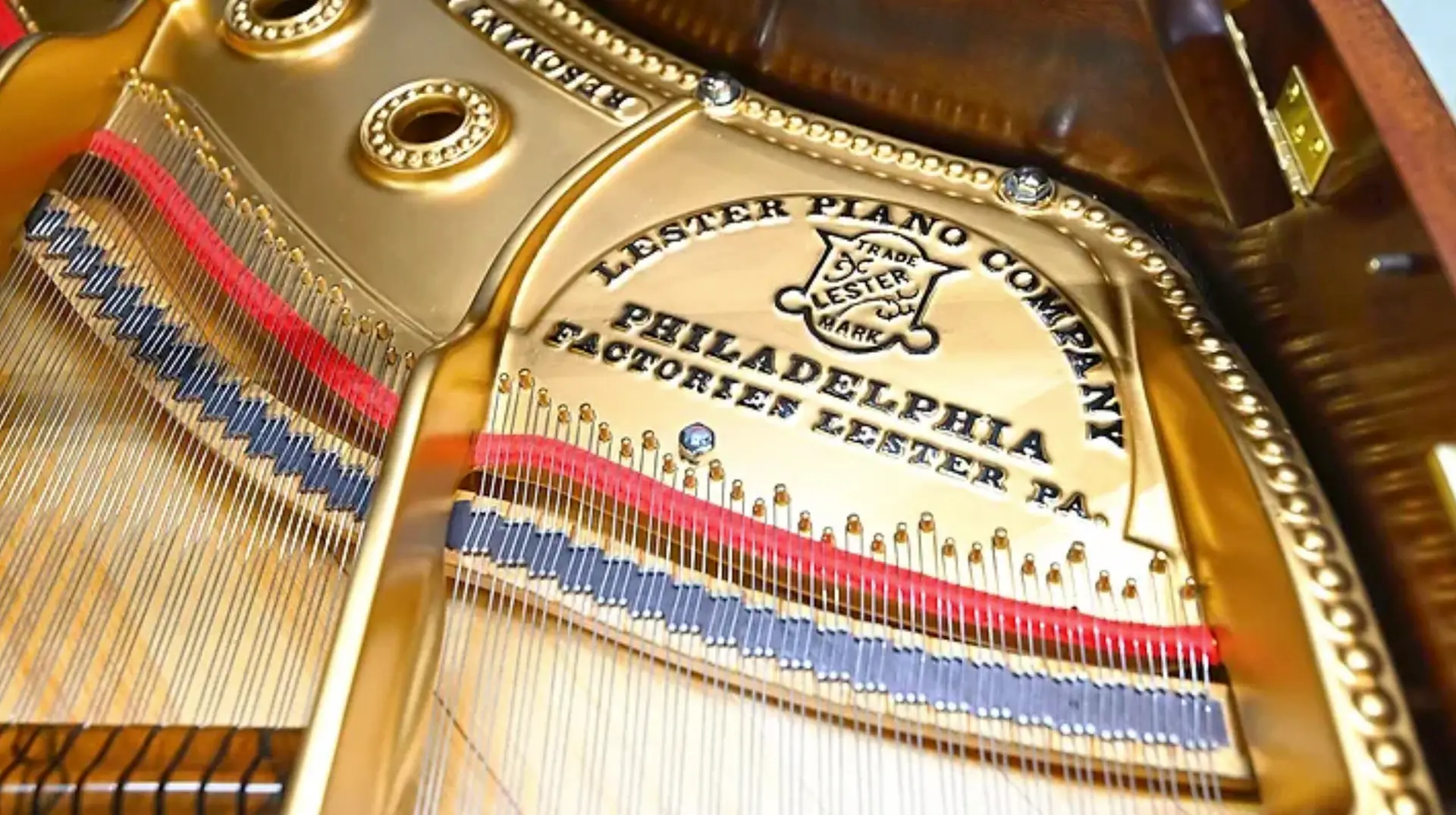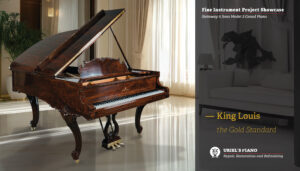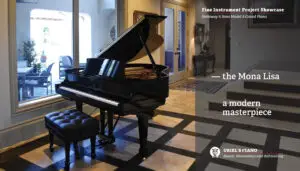Dallas, Texas — Uriel’s Master Woodworks piano restoration experts refinish the Lester Grand Piano with a stunning mahogany satin hand-rub finish.
Lester pianos won a high place in music because of their sweetness of tone and the care expended in their construction. On the part of the Lester Piano Co., adherence to the principle of creating quality instruments rather than building vast numbers of pianos was the basis of the Lester reputation. No detail in the Lester construction, by which the tone and durability might he perfected, was permitted to pass. As a result, many famous pianists approved of Lester pianos.
The Lester Piano Manufacturing Company also produced the Betsy Ross Spinets, which were met with outstanding success. Most styles of Lester Betsy Ross Spinets and Console Pianos were equipped with the exclusive Damp-Chaser to ensure regulated moisture control. The Lester is the only piano equipped with this fantastic Damp-Chaser that protects the piano from dampness in all climates, reduces the number of tunings, keeps the piano in perfect playing condition, and prolongs the life of the instrument.
In 1951, the Lester Piano Mfg. Co. added a Custom Series line to the popular Betsy Ross Spinets. This new series included distinctive models in unusual finishes, or any style could be finished to actual order. This Custom Series of Betsy Ross Spinets was met with broad public acceptance and was promoted by Lester nationally and through dealer advertising.
The Lester “one name . . one quality . . one price” policy was met with universal approval of dealers and consumers. This policy meant that all Lester Pianos were always of the same musical quality; any price difference was based on the case. There were no ghost or stencil pianos made by this company. It meant that everyone received equal value since there was only one price for a Lester Piano, which was the factory’s advertised price. This practice was called a “Fair Trade” policy but was outlawed as price fixing at a later date.
Shortly after World War II, Lester introduced a line of spinets using a new “Plastic” in their actions; plastics were very new in 1947 and not intended to be used in piano actions; after a few years, these actions began to fall apart. The Lester Company issued what was to become the first major recall of a major purchase. All of the plastic elbows in the actions were replaced on those pianos that were found to be defective. These pianos turn up occasionally, and the parts are still available to correct this problem through most piano repair shops.
The unedited article can be found here… https://www.bluebookofpianos.com/agesl.htm







